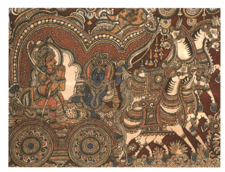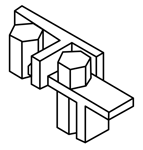MEDIUM
All Subjects
IMPORTANT
Earn 100
Fleas are perfectly designed by nature to feast on anything containing blood. Like a shark in the water or a wolf in the woods, fleas are ideally equipped to do what they do, making them very difficult to defeat. The bodies of these tiny parasites are extremely hardy and well suited for their job. A flea has a very hard exoskeleton, which means the body is covered by a tough, tile-like plate called a sclerite. Because of these plates, fleas are almost impossible to squish. The exoskeletons of fleas are also waterproof and shock resistant, and therefore fleas are highly resistant to the sprays and chemicals used to kill them. Little spines are attached to this plate. The spines lie flat against the flea's thin, narrow body as the flea scurries through an animal's fur in search of food. However, if anything (like fingers or a self- grooming pet) tries to pull a flea off through the hair coat, these spines will extend and stick to the fur like Velcro. Fleas are some of the best jumpers in the natural world. A flea can jump seven inches, or times its own length, either vertically or horizontally. An equivalent jump for a person would be feet, the height of the Washington Monument. Fleas can jump times in a row without stopping, and they are able to accelerate through the air at an incredibly high rate - a rate which is over ten times what humans can withstand in an airplane. Fleas have very long rear legs with huge thigh muscles and multiple joints. When they get ready to jump, they fold their long legs up and crouch like a runner on a starting block. Several of their joints contain rubber band provides momentum to a slingshot. Outward facing claws on the bottom of their legs grip anything they touch when they land. The adult female flea mates after her first blood meal and begins producing eggs in just to days. One flea can lay up to eggs in one day and over in her lifetime. Flea eggs can be seen with the naked eye, but they are about the size of a grain of salt. Shortly after being laid, the eggs begin to transform into cocoons. In the cocoon state, fleas are fully developed adults, and will hatch immediately if conditions are favorable. Fleas can detect warmth, movement, and carbon dioxide in exhaled breath, and these three factors stimulate them to emerge as new adults. If the flea does not detect appropriate conditions, it can remain dormant in the cocoon state for extended periods. Under ideal conditions, the entire life cycle may only take weeks, so in no time at all; pets and homes can become infested. Because of these characteristics, fleas are intimidating opponents. The best way to control fleas, therefore, is to take steps to prevent an infestation from ever occurring.
According to the passage, which of the following statements is true?
(a)Fleas extend their little spines if threatened.
(b)Fleas have the ability to jump higher than humans.
(c)Humans can jumb higher if they consume foods containing resilin
(d)The resilin found in fleas is used to make rubber bands.
50% studentsanswered this correctly

Important Questions on UCEED Mock Test Paper 1
MEDIUM
All Subjects
IMPORTANT
Question below is given a statement followed by three assumptions numbered I, II and III. You have to consider the statement and the following assumptions and decide which of the assumptions is implicit in the statement.
Statement: "We do not want you to see our product on newspaper, visit our shop to get a full view." - An advertisement.
Assumptions:
I. People generally decide to purchase any product after seeing the name in the advertisement.
II. Uncommon appeal may attract the customers.
III. People may come to see the product.
MEDIUM
All Subjects
IMPORTANT
MEDIUM
All Subjects
IMPORTANT
MEDIUM
All Subjects
IMPORTANT

MEDIUM
All Subjects
IMPORTANT

HARD
All Subjects
IMPORTANT

MEDIUM
All Subjects
IMPORTANT

HARD
All Subjects
IMPORTANT

